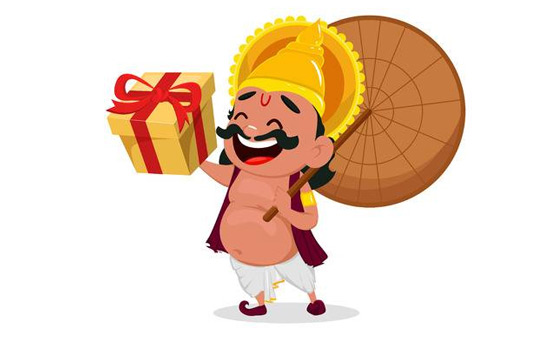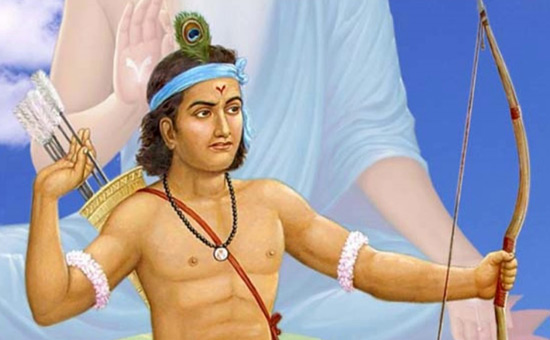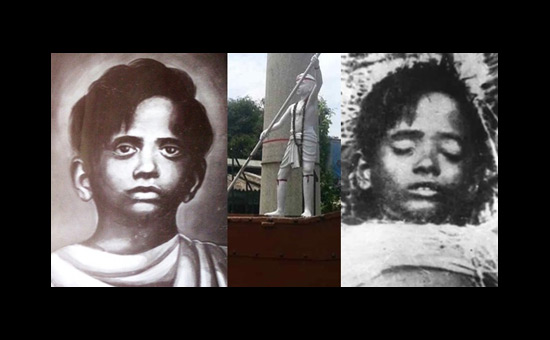- This part covers This Too Shall Pass, Child Freedom Fighters and Ekalavya.
Part One covered Guru, significance of
Ganga Saptami and Sambaji Maharaj and son of Shivaji. Part Two covered Mohini Avatar, Tiger
stories Ayyappa and Mother’s Day. Part Three tells you stories of Kamadhenu,
Sita Navami and Narasimha Jayanti. Part Four is about Buddha Purnima,
Athithi Devo Bhava and Tenzing Norgay. Part Five is about destiny-how karmas can
alter it, animal sacrifice and the power of surrender. Part Six
covers do not Wait for tomorrow, The Strange Prophecy and Know the Value of
Money. Part Seven
covers Ravana & Ma Kali, Naama-Japa and Gratitude.
Why did I start writing these Stories?As a mother of three I have realized that
many children are deprived of hearing tales that are Indian in origin. This
could be for various reasons, an important one being that parents themselves do
not know these tales.
The desire to learn English and about
Western Nations meant that atleast two generations were fed tales from the West
namely Sleeping Beauty, Cinderella, etc. Because of this when you ask a child
to write an essay of their favourite character they will write about Santa
Claus and Snow White but not Shivaji.
So I took it upon myself to write short
stories about India’s cultural heritage. The stories have been written in such
a way that they can be read to children. At the same time I added snippets of
our culture, rituals, shlokas, food, etc. so that children get to know about
them. Must add that these stories are not meant to be scholarly pieces of work.
This Too Shall Pass
Once there was a wise king, Rajashekhar by
name. He had a very wise set of ministers and a Raj Guru – a Sage who used to
advise him on many matters. Rajashekhar used to listen to the advice of this
Raj Guru very dutifully. The Raj Guru was very old and it was time for him to
depart this world. Before departing, he gave the king a box and told him to
open it only when it was absolutely essential to do so. He said it was a
magical box which could make the impossible possible.
Years passed. In the absence of the Raj Guru,
Rajashekhar became egotistical. He was very powerful now and thought that he
could rule the world. One day, his eyes fell on the box. He opened the box. It
had a slip of paper on it and in that was written the words, “This too shall
pass.” He closed the box perplexed. The next day a horde of enemy soldiers
landed on his kingdom and they were so fierce that the king had to run away.
What was his a day before – the kingdom, the riches, the throne - all were
lost. He understood the wisdom of the words “This too shall pass”. Time is so
strong that it takes just a minute to change the circumstances you are in.
He spent a few years struggling to win
back his kingdom. They were very difficult years and many a times he lost hope.
But he kept on the struggle because he was really sad for his people – the new
king was a tyrant. Rajashekhar helped the people sincerely and did whatever he
could to reduce their problems even while in exile. His all-round knowledge of
farming, trading, irrigation, archery, etc. came of use to help the people in
the far off regions of his erstwhile kingdom and also in the neighbouring
friendly kingdoms. The people loved him even more now.
 King with a box.
King with a box.
One day while he was pondering over his
future, his eyes fell on the box given by his old Rajaguru. He had forgotten
about what was in the box. He opened the box and saw the slip of paper bearing
the words, “This too shall pass.” The wisdom of these words gave him renewed
energy and he once again started gathering people to overcome the cruel king.
This time the neighbouring kings also agreed to help him. With a strong army,
Rajashekhar defeated the tyrant, and became the king once again. This time he
had learnt his lesson – he remained humble and lived with the realization that
Time was the greatest ruler of all.
In Bhaja Govindam, Adi Shankaracharya
says,
“mā kuru dhana
jana yauvana garvaṁ harati nimeṣātkālaḥ sarvam |
māyāmayamidamakhilaṁ
buddhvā brahmapadaṁ tvaṁ praviśa viditvā || 11 ||”
Meaning:
Take no pride in your possession, in the
people (at your command), in the youthfulness (that you have). Time loots away
all these in a moment. Leaving aside all these, after knowing their illusory
nature, realize the state of Brahman.
EKALAVYA
Eklavya was the son of a Nishad ruler, Hiranyadhanus, who was King Jarasandha's army commander. He wanted to be the greatest archer in the world. He wanted the best teacher of that time to teach him who then was Dronacharya, the teacher of the Kauravas and Pandavas. So he went to Drona and asked him to be his Guru. Now Dronacharya was a far-sighted individual.
He could very clearly see that Eklavya was
not a person with a Satvik (gentle and pure) bent of mind and foresaw that
Eklavya would use his Vidya (learning) as an enemy of Dharma. Also, Dronacharya
had been employed by Bhishma to teach the Kuru Princes (Kauravas and Pandavas)
with the condition that he would not teach anyone else. So Drona told Eklavya
that he would not teach him and asked him to look for another teacher.
Eklavya was a determined student however.
He made a statue of Dronacharya and practiced archery daily in front of the
statue. In his mind Drona was his Acharya (teacher). One day when Drona and the
Kuru princes were practicing archery in the forest, they were disturbed by a
dog barking incessantly. Drona told Arjuna to see to it that the dog was
stopped from barking. Before Arjuna could go towards the dog, the dog suddenly
stopped barking. Drona was surprised. Along with his students he reached the
spot where the dog was barking from. They saw that someone had shot 6 arrows
into the dog’s mouth to stop him from barking.

On looking around they saw Eklavya, who immediately
came to Drona and bowed down to him. It took Drona a little while to recognize
Eklavya, but when he did, he asked Eklavya to point out to his teacher. Eklavya
with humility, pointed out to the statue of Drona, indicating that Drona
himself was his teacher. Immediately Drona asked him for his Guru-dakshina.
Eklavya was happy to oblige. Drona now asked for the most difficult Dakshina of
all – the archer’s thumb. It is very difficult to shoot an arrow without a
thumb. But Eklavya cut off the thumb of his right hand and offered it to Drona.
Even after this Eklavya became an expert
archer. He fought against Sri Krishna by siding with Jarasandha. He also fought
along with Rukmi against Sri Krishna. During one of his fights against the
Yadavas, he was killed by Sri Krishna.
Note: Many
wonder why Drona asked for the thumb of Eklavya – they say that it was
because Drona was a Brahmin and Eklavya was a tribal. But this is a silly
explanation, because Eklavya was an army commander’s son – he was a Nishad
prince. It is the teacher who decided those days as to who was fit to be his
student, and if the teacher decided against teaching one, the student had to
obey the teacher.
Those were not the days when underhand
dealings and trustee seats were up for sale for education. Today, students who
do not get the required seat in colleges try other ways to become students of
that very college or stream. When education is got with cheating, can the
result of such education be good?
Also, Dronacharya’s fear that Eklavya
would side with Adharma in the future came true when he fought against Bhagwan
Sri Krishna multiple times. Another point to note is that killing an innocent animal
(the barking dog) to show off your skill or power can never be liked by any
true Guru. This action itself points to Vikruti (twisted nature).
Unfortunately around the 60’s and 70’s
Eklavya’s story was shown as one of great sacrifice. I have no doubt in my mind
that this was done to fan the flames of caste based distinction and hatred.
Child Freedom Fighters of
Bharat
In the struggle for Freedom from the
British, many gave up their lives. Among these were small children too. The
story of their bravery is one which makes us proud of being people of this land
of Tyaagis (those who have sacrificed their lives). Let us look at three such children
and fill our hearts with the courage that these children had.
BAJI RAUT
He is the youngest of Martyrs of this land
and was just 12 when he gave up his life. Baji Rout was the youngest son of a
boatman on the Brahmani river in Odisha. As an active member of the Banar
Sena of Prajamandal (Party of People), he had volunteered to keep watch by the
river at night.
The British Police force ordered him to
take them across the Brahmani river by his boat, on the night of 11 October
1938 at Nila kanthapur Ghat, Bhuban, Dhenkanal district. He refused and so he,
along with two other boatmen, was shot by the ruthless British force.
 Baji Raut
Baji Raut
KODI
KAATHA KUMARAN
Tirupur is a town near Coimbatore, Tamil
Nadu and it was Kumaran’s home town. In 1932, Kumaran organised a protest march
against the British. He was carrying the Indian National Flag, which was banned
by the British. This enraged British officials who then began assaulting the
protesters, including Kumaran, insisting he put the flag down.
Kumaran held on to the Indian Flag even
after being repeatedly beaten, He was mortally wounded and even when he fell
into a faint before dying, he clung on to the Indian flag ensuring it did not
fall to the ground. This incident gained him the title Kodi Kaatha
Kumaran — Kumaran, the saviour of the national flag.
KHUDIRAM BOSE
He was just 18 years old, when he was
sentenced to death for his role in the country’s freedom struggle. Magistrate
Kingsford, the Chief Magistrate of Calcutta Presidency was known for passing
harsh and cruel sentences on young political activists. He was also notorious
for inflicting corporal punishment (beating with a cane) on them. In 1908,
Khudiram Bose was appointed to kill Kingston, who was now the District
Magistrate of Muzzafarpur.
On April 20, 1908, Bose threw a bomb at a
carriage, believed to be carrying Kingsford, outside the European club. But
unfortunately, the carriage was occupied by the wife and daughter of barrister
Pringle Kennedy, a leading pleader at the Muzaffarpur Bar.
An extra police force was deployed to find
the perpetrator. Bose, in the meantime, had walked 25 miles and reached Vaini
railway station. He was arrested by two officers there and hanged to death on
August 11, 1908. His co-conspirator Prafulla Chaki committed suicide before
being caught by the British. He walked to the gallows firmly and cheerfully
and even smiled when the cap was drawn over his head. He kept saying “Vande
Mataram” when he was caught and even in court during his trial. Such a brave
lad … he knew no fear & he loved his country more than his life. And today
we have people who are ashamed of saying “Vande Mataram”.
Author is
a mother to three children and writes on Spirituality, Women Empowerment and
National Affairs. Her articles are published on Indusscrolls.com amongst
others. She believes in the cause of the Indian Breed of Cows and is a follower
of Shree Ramachandrapura Matha, Karnataka.
To read all articles by author